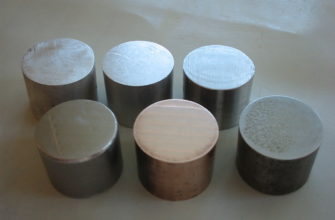Batteries are essential devices that power our modern world. From smartphones and laptops to electric vehicles and renewable energy grids, batteries enable us to store and use electricity whenever and wherever we need it. Anyway, conventional batteries are limited by such factors as low energy density, slow charging speed, short lifespan and environmental impact. Therefore, demand for more sophisticated and sustainable battery technologies that can overcome these challenges and meet the needs of the future is growing. In this article, we will explore some of the most promising and innovative battery technologies based on graphene and aluminium. Graphene is a two-dimensional material made of carbon atoms arranged in a honeycomb lattice. It has such remarkable properties as high electrical and thermal conductivity, large surface area, mechanical strength and flexibility. Aluminium is a metal that is abundant, cheap, lightweight and recyclable. It has a high theoretical capacity and a low potential for oxidation. These materials together, can create batteries that are more powerful, efficient, durable and eco-friendly than conventional ones.
We will also look at some of the leading companies and researchers that develop and manufacture these batteries, as well as their products and technologies. We will compare and contrast the different types of graphene and aluminium-based batteries, such as graphene aluminium batteries, aluminium graphene batteries, graphene aluminium ion batteries and borophene batteries. We will also discuss the current challenges and potential solutions, as well as future trends and developments in this field.
Graphene Battery Technology
Graphene is a material that consists of a single layer of carbon atoms arranged in a hexagonal pattern. It is one of the thinnest, strongest, and most conductive materials ever discovered. Graphene has many potential applications in various fields, including electronics, biotechnology, nanotechnology, and energy.
One of the most promising applications of graphene is in battery technology. Graphene can enhance performance and efficiency of batteries in several ways. For example, graphene can be used as an electrode material, separator material, coating material or additive material in batteries. To form composite materials or hybrid structures with improved properties graphene can also be combined with other materials, such as metals, polymers or oxides.
Some of advantages of graphene application in batteries:
- Graphene can increase the energy density and power density of batteries, which means that they can store more energy and deliver more power per unit weight and volume.
- Graphene can improve the charging and discharging speed of batteries, which means that they can be fully charged and drained faster and more frequently.
- Graphene can extend the lifespan and stability of batteries, which means that they can last longer and maintain their performance over time.
- In 2021, a team of researchers from the University of Illinois at Chicago and the Korea Advanced Institute of Science and Technology (KAIST) developed a graphene-based battery that can harvest energy from the environment, such as light, heat, and motion. The battery can also self-charge and self-discharge without external power sources.
- Graphene can reduce the weight and size of batteries, which means that they can be more portable and flexible.
- Graphene can enhance the safety and environmental friendliness of batteries, which means that they can prevent overheating, short-circuiting and leakage, and can be easily recycled or disposed.
Some of the notable breakthroughs in graphene battery research:
- In 2019, a team of researchers from the University of California, Los Angeles (UCLA) developed a graphene supercapacitor that can charge and discharge 10,000 times faster than conventional batteries, and can store as much energy as a lithium-ion battery.
- In 2020, a team of researchers from the University of Cambridge and the Beijing Institute of Technology created a graphene-based aerogel that can act as a sponge to store large amounts of energy in a small space. The aerogel can also be compressed and stretched without losing its capacity.
Aluminium Graphene Batteries
Aluminium graphene batteries use aluminium as the anode material and graphene as the cathode material. Aluminium graphene batteries are different from graphene aluminium batteries, which use graphene as the anode material and aluminium as the cathode material. Aluminium graphene batteries have several advantages over conventional batteries, such as lithium-ion batteries.
Some of the key features and benefits of aluminium graphene batteries:
- Aluminium graphene batteries have higher energy density and power density than lithium-ion batteries, which means that they can store more energy and deliver more power per unit weight and volume.
- Aluminium graphene batteries have faster charging and discharging rate than lithium-ion batteries, which means that they can be fully charged and drained in minutes rather than hours.
- Aluminium graphene batteries have longer lifespan and stability than lithium-ion batteries, which means that they can last for thousands of cycles without losing their capacity or performance.
- Aluminium graphene batteries have lower cost and environmental impact than lithium-ion batteries, which means that they are more affordable and sustainable. Aluminium is abundant, cheap and recyclable, while graphene is biodegradable and non-toxic.
Some of the case studies and real-world applications of aluminium graphene batteries:
- In 2017, a team of researchers from the University of Maryland and the U.S. Army Research Laboratory developed aluminium graphene battery that can withstand high temperatures and pressures, making it suitable for military and aerospace applications.
- In 2018, a team of researchers from the University of Waterloo and the University of California, Riverside created aluminium graphene battery that can bend and fold without affecting its performance, making it ideal for wearable and flexible electronics.
- In 2019, a company called Nanograf Technologies launched commercial aluminium graphene battery that can increase the range and performance of electric vehicles, making them more competitive and attractive to consumers.
Graphene Aluminium Batteries
Graphene aluminium batteries uses graphene as the anode material and aluminium as the cathode material. Graphene aluminium batteries are different from aluminium graphene batteries, which use aluminium as the anode material and graphene as the cathode material. Graphene aluminium batteries have several advantages over conventional batteries, such as lithium-ion batteries.
Some of the advantages of using graphene aluminium batteries:
- Graphene aluminium batteries have lower voltage and resistance than lithium-ion batteries, which means that they can deliver more current and power with less heat generation and energy loss.
- Graphene aluminium batteries have higher capacity and efficiency than lithium-ion batteries, which means that they can store more energy and use it more effectively.
- Graphene aluminium batteries have simpler and safer structure than lithium-ion batteries, which means that they can avoid the use of toxic and flammable materials, such as liquid electrolytes, separators and binders.
- Graphene aluminium batteries have wider operating temperature range than lithium-ion batteries, meaning that they can work well in extreme hot and cold conditions.
Some of the challenges and potential solutions in developing and commercializing graphene aluminium batteries:
- One of the main challenges is to improve the stability and durability of the graphene anode, which tends to degrade and corrode caused by chemical reaction with aluminium ions. One possible solution is to coat the graphene with protective layer of metal oxide or polymer, which can prevent oxidation and dissolution of the graphene.
- Another challenge is to optimize performance and compatibility of the aluminium cathode, which tends to have low conductivity and high volume expansion during charging and discharging. One possible solution is alloying the aluminium with other metals, such as tin or zinc, which can enhance conductivity and reduce the volume change of the aluminium.
- The third challenge is to scale up the production and fabrication of the graphene aluminium batteries, which requires high-quality and low-cost graphene and aluminium materials, as well as advanced and efficient manufacturing processes and equipment. One possible solution is to use chemical vapor deposition (CVD) or electrochemical exfoliation methods to produce large-scale and uniform graphene sheets, and to use electrodeposition or sputtering methods to deposit thin and dense aluminium layers on the graphene.
Some of the future prospects and market implications of the graphene aluminium batteries:
- Graphene aluminium batteries have large potential to replace lithium-ion batteries in various applications, such as consumer electronics, electric vehicles and grid-scale energy storage, because of their superior performance and sustainability.
- Graphene aluminium batteries can also enable new applications and innovations, such as flexible and wearable devices, smart textiles and biodegradable electronics, due to their lightweight and versatile nature.
- Graphene aluminium batteries can also contribute to global transition to renewable and clean energy sources, such as solar and wind, by providing efficient and reliable energy storage solutions that can overcome intermittency and variability of these sources.

Leading Graphene Battery Companies
Graphene battery technology is fast growing and competitive field, with many companies and researchers striving to develop and manufacture the best and most innovative products and technologies. Some of the leading companies in graphene battery manufacturing are:
- Nanograf Technologies: Nanograf Technologies is U.S.-based company that specializes in producing high-performance graphene-enhanced anode materials for lithium-ion batteries. The company claims that its patented technology can increase the energy density of batteries by up to 50%, reduce charging time by up to 80%, and extend lifespan by up to 200%. The company has partnered with several major players in automotive, consumer electronics and aerospace industries, such as Samsung, BMW and Boeing, to provide customized solutions for their products.
- Graphenano: Graphenano is Spanish company that focuses on producing high-quality graphene and graphene-based products for various applications, including batteries. The company has developed graphene polymer battery that can offer up to four times more energy density, six times more power density and 10 times faster charging than conventional batteries. The company has also launched subsidiary called Grabat Energy, which aims to commercialize its graphene batteries for electric vehicles, motorcycles, bicycles and drones.
- XG Sciences: XG Sciences is U.S.-based company that offers range of graphene nanoplatelets and graphene-enhanced materials for various applications, including batteries. The company has developed graphene-based silicon anode material that can increase capacity and cycle life of lithium-ion batteries by up to 400%. The company has also collaborated with several leading companies and organizations, such as Ford, LG Chem and the U.S. Department of Energy, to develop and test its graphene battery technology.
Comparative analysis of products and technologies of these companies is shown in the table below:
| Company | Product | Technology | Energy Density | Power Density | Charging Time | Lifespan |
|---|---|---|---|---|---|---|
| Nanograf Technologies | Graphene-enhanced anode | Coating graphene on silicon particles | Up to 50% higher than conventional batteries | Similar to conventional batteries | Up to 80% faster than conventional batteries | Up to 200% longer than conventional batteries |
| Graphenano | Graphene polymer battery | Using graphene as both electrodes and electrolyte | Up to four times higher than conventional batteries | Up to six times higher than conventional batteries | Up to 10 times faster than conventional batteries | Similar to conventional batteries |
| XG Sciences | Graphene-based silicon anode | Mixing graphene nanoplatelets with silicon particles | Up to 400% higher than conventional batteries | Similar to conventional batteries | Similar to conventional batteries | Up to 400% longer than conventional batteries |
Borophene Batteries
Borophene is a material that consists of single layer of boron atoms arranged in triangular or hexagonal pattern. It is similar to graphene, but has some distinct features and advantages. Borophene is more flexible, more metallic and more reactive than graphene. Borophene also has a higher theoretical capacity and lower potential for oxidation than graphene.
Borophene has been proposed as potential battery material, especially for the anode. Borophene can store more lithium ions than graphene and can also accommodate other metal ions, such as sodium, potassium and magnesium. Borophene can also form stable and reversible bonds with these ions, which can enhance performance and stability of the batteries.
Some of current research and developments in borophene batteries:
- In 2018, a team of researchers from Rice University and Northwestern University synthesized borophene on silver substrate and demonstrated its high lithium-ion storage capacity and fast charging rate. They also showed that borophene can be peeled off from the substrate and transferred to other surfaces, such as copper or nickel, for battery fabrication.
- In 2019, a team of researchers from the University of California, Berkeley and Lawrence Berkeley National Laboratory created borophene-based sodium-ion battery that can deliver high energy density and long cycle life. They also revealed the atomic-scale mechanism of how borophene interacts with sodium ions and how it can prevent the formation of dendrites, which are harmful deposits that can cause battery failure.
- In 2020, a team of researchers from the University of Illinois at Urbana-Champaign and the University of Science and Technology of China developed borophene-based potassium-ion battery that can achieve high power density and fast charging rate. They also demonstrated that borophene can form self-healing layer that can repair the defects and cracks caused by repeated insertion and extraction of potassium ions.
Some of the prospects and challenges in adopting borophene for energy storage:
- Borophene batteries have potential to outperform graphene batteries and conventional batteries in terms of capacity, power, speed and durability. Borophene batteries can also offer more flexibility and versatility in terms of choice of metal ions and substrates.
- Borophene batteries also face some challenges in terms of synthesis, fabrication and commercialization. Borophene is difficult to produce in large quantities and in pure forms, as it requires high temperatures and pressures, and is sensitive to air and moisture. To form functional and stable batteries borophene also needs to be integrated with other materials, such as electrolytes, separators and cathodes.
- Borophene batteries also need to be tested and validated in real-world conditions and applications, such as electric vehicles, smart grids, and portable devices. Borophene batteries also need to be compared and benchmarked with other emerging battery technologies, such as solid-state batteries, metal-air batteries and flow batteries.

Graphene Battery Manufacturers
Graphene battery manufacturers produce and sell batteries that use graphene as a key component. Companies that manufacture graphene batteries aim to provide high-performance and sustainable energy storage solutions for various applications, such as consumer electronics, electric vehicles, and renewable energy grids. Graphene battery manufacturers also seek to innovate and improve their products and technologies, as well as to expand their market share and global presence.
Some of the profiles of key players in graphene battery production:
- Real Graphene: Real Graphene is a U.S.-based company that specializes in producing graphene-enhanced lithium-ion batteries. The company claims that its batteries can charge up to five times faster, last up to four times longer and have lower temperature rise than conventional batteries. The company offers graphene batteries for smartphones, laptops, power banks, drones and electric scooters.
- Log 9 Materials: Log 9 Materials is an Indian company that focuses on developing graphene-based nanomaterials and products for various applications, including batteries. The company has created graphene-based metal-air battery that can offer up to 10 times more energy density, 15 times longer lifespan, and 100% recyclability than conventional batteries. The company aims to use its batteries for electric vehicles, backup power and remote areas.
- Graphenea: Graphenea is Spanish company that provides high-quality graphene and graphene-based products for various applications, including batteries. The company has developed graphene-based solid-state battery that can offer higher safety, stability and performance than conventional batteries. The company plans applicatiob of its batteries for wearable devices, medical implants and smart cards.
Comparative analysis of the manufacturing processes and technological innovations of these companies:
- Real Graphene:
- Using chemical vapor deposition (CVD) to grow graphene on copper foil with further transferring it to polymer film
- Using proprietary technique to create uniform and dense layer of graphene on the electrodes, which can enhance conductivity and capacity of the batteries
- Log 9 Materials:
- Using electrochemical exfoliation to produce graphene from graphite with further coating it on metal mesh
- Using novel design to create metal-air battery that uses graphene as catalyst, which can increase efficiency and durability of the batteries
- Graphenea:
- Using CVD to grow graphene on copper foil with further transferring it to a silicon wafer
- Using cutting-edge method to create solid-state battery that uses graphene as an electrolyte, which can improve the safety and stability of the batteries

Graphene Aluminum Ion Battery
Graphene aluminum ion battery uses graphene as the cathode material and aluminum as the anode material, as well as an ionic liquid as the electrolyte. The graphene aluminum ion battery is different from the graphene aluminum battery, which uses graphene as the anode material and aluminum as the cathode material. A graphene aluminum ion battery has several advantages over conventional batteries, such as lithium-ion batteries.
Some of the advantages of using graphene aluminum ion batteries:
- Graphene aluminum ion batteries have higher power density and lower energy density than lithium-ion batteries, which means that they can deliver more power and charge faster, but store less energy.
- Graphene aluminum ion batteries have longer lifespan and stability than lithium-ion batteries, which means that they can last for tens of thousands of cycles without losing their capacity or performance.
- Graphene aluminum ion batteries have lower cost and environmental impact than lithium-ion batteries, which means that they are more affordable and sustainable. Aluminum is abundant, cheap and recyclable, while graphene is biodegradable and non-toxic.
Some of the challenges and potential solutions in developing and commercializing graphene aluminum ion batteries:
- One of the main challenges is improving the energy density and capacity of the graphene cathode, which tends to be low due to the low voltage and charge transfer of the aluminum ions. One possible solution is to dope the graphene with other elements, such as nitrogen or sulfur, which can increase voltage and charge transfer of the aluminum ions.
- Another challenge is to optimize performance and compatibility of ionic liquid electrolyte, which tends to have high viscosity and low conductivity. One possible solution is to use mixture of different ionic liquids, such as imidazolium and pyrrolidinium, which can reduce viscosity and increase conductivity of the electrolyte.
- The third challenge is to scale up production and fabrication of the graphene aluminum ion batteries, which requires high-quality and low-cost graphene and aluminum materials, as well as advanced and efficient manufacturing processes and equipment. One possible solution is to use electrochemical exfoliation or liquid-phase exfoliation methods to produce large-scale and uniform graphene sheets, and to use electrodeposition or sputtering methods to deposit thin and dense aluminum layers on the graphene.
Some of potential applications and impact of the graphene aluminum ion batteries on the energy storage landscape:
- Graphene aluminum ion batteries have potential to complement lithium-ion batteries in various applications, such as consumer electronics, electric vehicles and renewable energy grids, due to their superior power and speed.
- Graphene aluminum ion batteries can also enable new applications and innovations, such as smart devices, sensors and actuators, due to their lightweight and flexible nature.
- Graphene aluminum ion batteries can also contribute to global transition to renewable and clean energy sources, such as solar and wind, by providing fast and reliable energy storage solutions that can overcome intermittency and variability of these sources.

Future Trends and Developments
Graphene and aluminium-based batteries are among the most promising and innovative battery technologies that can revolutionize the energy storage industry. However, they are still in the early stages of research and development and face many challenges and uncertainties. Therefore, it is important to anticipate and explore future trends and developments in this field, as well as their implications and impacts.
Some of emerging trends in graphene and aluminium-based batteries:
- Integration of multiple materials and functions: Graphene and aluminium-based batteries can be integrated with other materials and functions, such as supercapacitors, fuel cells, solar cells and thermoelectric generators, to create hybrid systems that can offer enhanced performance and functionality. For example, graphene supercapacitor can be combined with the aluminium battery to create system that able to store and deliver both high energy and high power.
- Development of novel structures and architectures: Graphene and aluminium-based batteries can be designed and fabricated in novel structures and architectures, such as nanowires, nanotubes, nanosheets, nanoflowers and nanocomposites, to create batteries that can have improved properties and performance. Graphene nanowire, for instance, can be used as anode material that can increase the battery’s surface area and conductivity.
- Advancement of smart and intelligent features: Graphene and aluminium-based batteries can be equipped with smart and intelligent features, such as sensors, actuators, controllers and communication modules, to create batteries that can monitor and regulate their own performance and condition, as well as interact with other devices and systems. For example, the graphene battery can be embedded with sensor that can detect the battery’s temperature and voltage and adjust charging and discharging rate accordingly.
Some of anticipated breakthroughs and their implications in graphene and aluminium-based batteries:
- Achievement of mass production and commercialization: Graphene and aluminium-based batteries can be mass produced and commercialized, which can reduce cost and increase availability and accessibility of these batteries. This can also create new markets and opportunities for various industries and sectors, such as transportation, communication and healthcare. For example, graphene and aluminium-based batteries can be used to power electric vehicles, smartphones and medical devices.
- Discovery of new materials and mechanisms: Graphene and aluminium-based batteries can be based on new materials and mechanisms, which can offer superior performance and efficiency than the existing ones. This can also expand scope and potential of these batteries, as well as open new avenues for research and innovation. For example, graphene and aluminium-based batteries can be based on quantum dots, ionic liquids or redox flow mechanisms.
- Demonstration of large-scale and long-term applications: Graphene and aluminium-based batteries can be demonstrated in large-scale and long-term applications, which can prove feasibility and reliability of these batteries. This can also increase confidence and trust of consumers and stakeholders, as well as showcase benefits and advantages of these batteries. For example, graphene and aluminium-based batteries can be used to store and supply renewable energy, such as solar and wind, for a city or a country.
Some of the role of these technologies in transition to sustainable energy:
- Enhancement of renewable energy generation and utilization: Graphene and aluminium-based batteries can enhance generation and utilization of renewable energy, such as solar and wind, by providing efficient and reliable energy storage solutions that can overcome intermittency and variability of these sources. This can also increase the share and penetration of renewable energy in energy mix, as well as reduce dependence and consumption of fossil fuels.
- Reduction of greenhouse gas emissions and environmental impact: Graphene and aluminium-based batteries can reduce greenhouse gas emissions and environmental impact of energy sector, by using materials that are abundant, cheap and recyclable, such as aluminium and graphene, and by avoiding the use of materials that are toxic and flammable, such as liquid electrolytes and binders. This can also mitigate the effects and risks of climate change and pollution.
- Improvement of energy efficiency and security: Graphene and aluminium-based batteries can improve energy efficiency and security of the energy sector, by providing high-performance and sustainable energy storage solutions that can reduce the energy loss and waste, and by enabling decentralization and diversification of energy sources and systems. This can also enhance resilience and reliability of energy infrastructure and services.

Conclusion
It can be concluded that graphene and aluminium-based batteries are some of the most promising and innovative battery technologies that can revolutionize industry of energy storage. These batteries can offer superior performance and sustainability than conventional batteries, such as lithium-ion batteries, in terms of energy density, power density, charging speed, lifespan, cost and environmental impact. These batteries can also enable new applications and innovations, such as flexible and wearable devices, smart grids and biodegradable electronics, as well as contribute to global transition to renewable and clean energy sources, such as solar and wind.
However, graphene and aluminium-based batteries are still in the early stages of research and development, and face many challenges and uncertainties. That is why it is important to anticipate and explore future trends and developments in this field, as well as their implications and impacts. Some of the emerging trends are integration of multiple materials and functions, development of novel structures and architectures, and advancement of smart and intelligent features. Some of the anticipated breakthroughs are achievement of mass production and commercialization, discovery of new materials and mechanisms, and demonstration of large-scale and long-term applications.
Graphene and aluminium-based batteries are not only technological innovation, but also social and environmental one. They have large potential to transform the way we generate, store and use electricity, as well as to improve quality of life and health of the planet. Therefore, it is essential to encourage and support continued research and innovation in this field, as well as to raise awareness and education among public and stakeholders. Graphene and aluminium-based batte










